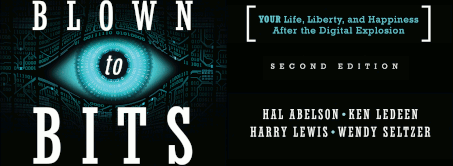A Victory for “Free” Copyright Licenses
Thursday, August 28th, 2008 by Harry LewisA major point of Chapter 6 of Blown to Bits is that copyright protections were so strengthened by rewrites of copyright law over the past decade that it became difficult even to facilitate the re-use of your creations (literary, software, or artistic), unless gave up all claims on your work and released them into the public domain. As we discuss, Creative Commons was an effort (Hal was among the founders) to allow creators easily to specify conditions under which their creations could be re-used by others (for example, that the new creation include proper attribution to the original, and that such “borrowers” must make similar requirements on those who borrow in turn).
But there has always been a bit of discomfort about the legal infrastructure underlying Creative Commons licenses. Suppose I put a CC license on my work and you just use it, ignoring the conditions I stipulated. Have you actually done anything unlawful? The theory has been that in attaching a CC license, I never gave up my copyright, and I could always go after you for infringing that copyright. But it’s a delicate matter of law and, until recently, it had never been tested in court.
Indeed, a Federal District Court in California came to the opposite conclusion about an “Open Source” license — that the creator couldn’t impose a legal requirement on the re-user by attaching the open source license. On August 13, that decision was reversed on appeal to the US Court of Appeals for the Federal Circuit, which is the venue where appeals on intellectual property issues like this get adjudicated. Though it applies exclusively to software, an “open source” license is enough like a Creative Commons license in its intent and in what it requires that there is now much more confidence that CC licenses are legally binding.
The case is that of Robert Jacobsen v. Matthew Katzer and Kamind Associates, and the decision of the Appeals Court is here. The decision is 15 pages, and while you would need legal training to understand the subtleties, the gist of what the parties did and the court’s reasoning about its conclusion are comprehensible to an interested layperson.
